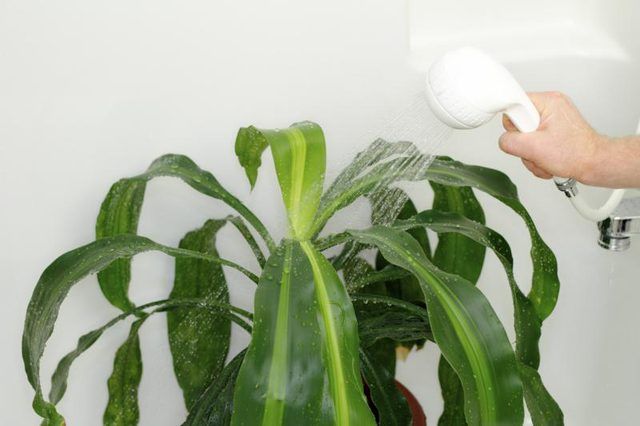Bulbs
Flower Basics
Flower Beds & Specialty Gardens
Flower Garden
Garden Furniture
Garden Gnomes
Garden Seeds
Garden Sheds
Garden Statues
Garden Tools & Supplies
Gardening Basics
Green & Organic
Groundcovers & Vines
Growing Annuals
Growing Basil
Growing Beans
Growing Berries
Growing Blueberries
Growing Cactus
Growing Corn
Growing Cotton
Growing Edibles
Growing Flowers
Growing Garlic
Growing Grapes
Growing Grass
Growing Herbs
Growing Jasmine
Growing Mint
Growing Mushrooms
Orchids
Growing Peanuts
Growing Perennials
Growing Plants
Growing Rosemary
Growing Roses
Growing Strawberries
Growing Sunflowers
Growing Thyme
Growing Tomatoes
Growing Tulips
Growing Vegetables
Herb Basics
Herb Garden
Indoor Growing
Landscaping Basics
Landscaping Patios
Landscaping Plants
Landscaping Shrubs
Landscaping Trees
Landscaping Walks & Pathways
Lawn Basics
Lawn Maintenance
Lawn Mowers
Lawn Ornaments
Lawn Planting
Lawn Tools
Outdoor Growing
Overall Landscape Planning
Pests, Weeds & Problems
Plant Basics
Rock Garden
Rose Garden
Shrubs
Soil
Specialty Gardens
Trees
Vegetable Garden
Yard Maintenance
How to Care for a Corn Plant (Dracaena Fragrans)
How to Care for a Corn Plant (Dracaena Fragrans). Corn plant (Dracaena fragrans), is usually grown as a foliage houseplant, although it also grows outdoors in the warm climates of U.S. Department of Agriculture plant hardiness zones 10 through 12 in shady locations. Outdoors, this African native grows 20 feet tall or more, but if you keep it in a...

Corn plant (Dracaena fragrans), is usually grown as a foliage houseplant, although it also grows outdoors in the warm climates of U.S. Department of Agriculture plant hardiness zones 10 through 12 in shady locations. Outdoors, this African native grows 20 feet tall or more, but if you keep it in a pot indoors, it will stay around 4 to 6 feet tall. Corn plant grows easily with the right light, water, fertilizer and an occasional pest inspection.
Apply Fertilizer Seasonally
From spring through fall, a corn plant needs monthly feeding with a liquid fertilizer specifically for houseplants. Look for one that doesn't contain superphosphate. Mix 1/2 teaspoon of the fertilizer with 1 gallon of water, or according to the label rates. Replace one regular watering with the fertilizer solution to avoid overwatering. Use enough of the solution to moisten the soil all the way to the bottom of the container until excess starts to seep out the holes. Add plain water if the 1 gallon of fertilizer solution isn't enough to thoroughly wet the soil. Plants being over-fertilized will develop yellow or burned tips and leaf margins.
Watering Year-Round
Water the corn plant regularly in spring, summer and early fall. In late fall, allow the soil to dry out between waterings. In the winter, allow the water to warm up to room temperature before you use it. Browning, dead-looking leaves mean either you're overwatering or underwatering. If the soil feels wet and muddy, let it dry out and make sure the container has holes in the bottom so water can drain. If the soil is dry and hard, water more frequently.
Winter Care
In the winter, keep your corn plant looking lush by spraying the leaves with room-temperature water. Misting the leaves increases humidity during dry weather or because of indoor heating. You can also set the container on a tray filled with pebbles. Just add a little water in the bottom of the tray. As the water evaporates around the corn plant, it adds humidity. In summer, the corn plant can live outside but in winter, keep it indoors in bright light where you can maintain daytime temperatures between 60 and 70 degrees Fahrenheit and 50 to 60 F at night. Plants grown in light conditions that are too bright can develop streaks and dry patches on the foliage. Foliage may drop when temperatures suddenly fluctuate or the corn plant is situated in a drafty area.
Pests and Pest Solutions
While generally resistant to most pests, you may find scale insects and spider mites bother your corn plant. Check the leaves and stems carefully. Scale insects looks like hard lumps that will dislodge when pressed with a fingernail. Spider mites are white, minuscule insects that feed in colonies on the leaves. You'll often see a fine webbing over the leaves that looks like a spider web. The least toxic way to get rid of these pests is by using dish soap and a cloth to wipe off the infested leaves and stem areas. Use 1/2 teaspoons of soap diluted in 1 quart of water and a clean, soft cloth.
Corn plants grown in soils that are constantly saturated in water can develop root rot. To stop root rot from occurring, use correct watering practices and use a organically rich and well draining potting mix. If grown outdoors in the ground, grow the corn plant in soils that drain well and water only when the soil becomes dry.
Trimming and Size Maintenance
While a corn plant doesn't require pruning, you can trim the stalk to keep it from getting too big. Use a pair of sharp shears to cut it back to the height you want to maintain. This foliage plant will put out new leaves and grow more vigorously after pruning. Clean your pruning shears in a solution of 1 part rubbing alcohol to 1 part water after trimming plants.